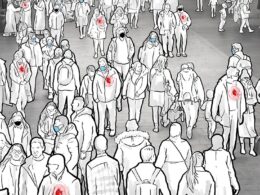the
healthtransformation
.foundation
Joaquim Cardoso MSc
February 1, 2024
This executive summary is based on the article “Five Bold Predictions for Long COVID in 2024”, published by Wired and written by Sara Novak on January 25, 2024.
What is the message?
Amid ongoing large-scale clinical trials and intensified research efforts, 2024 holds promising prospects for advancements in the treatment of long COVID.
Encouraging research outcomes provide a glimmer of hope for both patients and healthcare providers grappling with the challenges of this lingering and complex condition.

ONE PAGE SUMMARY
What are the key points?
Understanding Long COVID Phenotypes:
Research indicates that long COVID manifests in distinct phenotypes, such as chronic fatigue, respiratory issues, chronic pain, and neurosensorial symptoms.
The expectation is to develop specific diagnostic criteria for each phenotype, allowing tailored treatments for improved patient outcomes.
Multiple medications targeting different pathways of long COVID are in development, necessitating the identification of the most suitable treatment for each case.
Monoclonal Antibodies:
Monoclonal antibodies show promise in treating viral persistence, a potential cause of long COVID.
Preliminary studies indicate complete recovery in some patients using monoclonal antibodies, sparking optimism for larger clinical trials.
If successful, this approach could significantly impact a broad spectrum of long COVID patients worldwide.
Paxlovid’s Potential Efficacy:
Paxlovid, an FDA-approved medication for mild to moderate COVID-19, is being explored for its effectiveness in treating post-viral long COVID symptoms.
The oral antiviral aims to prevent viral replication, offering a different approach than monoclonal antibodies.
Ongoing trials seek to determine which subset of long COVID patients would benefit most from Paxlovid.
Anti-Inflammatories and Metformin:
Inflammatory markers present in long COVID patients resemble those in autoimmune diseases.
Anti-inflammatory medications, including metformin, show potential in alleviating long COVID symptoms.
The challenge lies in balancing effectiveness with side effects, with metformin emerging as a cost-effective and low-risk option.
Serotonin Levels and SSRIs:
Lower serotonin levels are observed in long COVID patients, with a study suggesting improvement in cognitive function with the SSRI fluoxetine in rat models.
Clinical trials are needed to explore whether altering serotonin levels can lead to symptom relief in long COVID patients.
SSRIs may play a role in boosting serotonin levels and reducing symptoms, opening avenues for further investigation.
What are the key statistics?
Monoclonal antibody studies showcase complete recovery in three patients with long COVID.
Paxlovid, approved for mild to moderate COVID-19, is being studied in large-scale trials for post-viral long COVID symptoms.
Metformin reduces the risk of long COVID by up to 40% when taken during the acute stage.
What are the key examples?
The identification of long COVID phenotypes aims to provide targeted treatments based on individual experiences.
Monoclonal antibodies demonstrate potential in treating viral persistence, with ongoing trials exploring broader applications.
Paxlovid’s dual-drug composition offers a unique approach to combating viral replication in long COVID patients.
Metformin emerges as a cost-effective and widely available anti-inflammatory with promising results.
Lower serotonin levels and SSRIs present a novel avenue for symptom relief in long COVID patients.
Conclusion
The landscape of long COVID treatment is evolving with promising developments, from understanding distinct phenotypes to exploring innovative medications.
While challenges persist, the potential breakthroughs in monoclonal antibodies, Paxlovid, anti-inflammatories, and serotonin-related treatments offer hope for improved outcomes and relief for long-suffering patients in 2024.
Continued research and clinical trials will be pivotal in shaping the future of long COVID management.
To read the original publication, click here.












